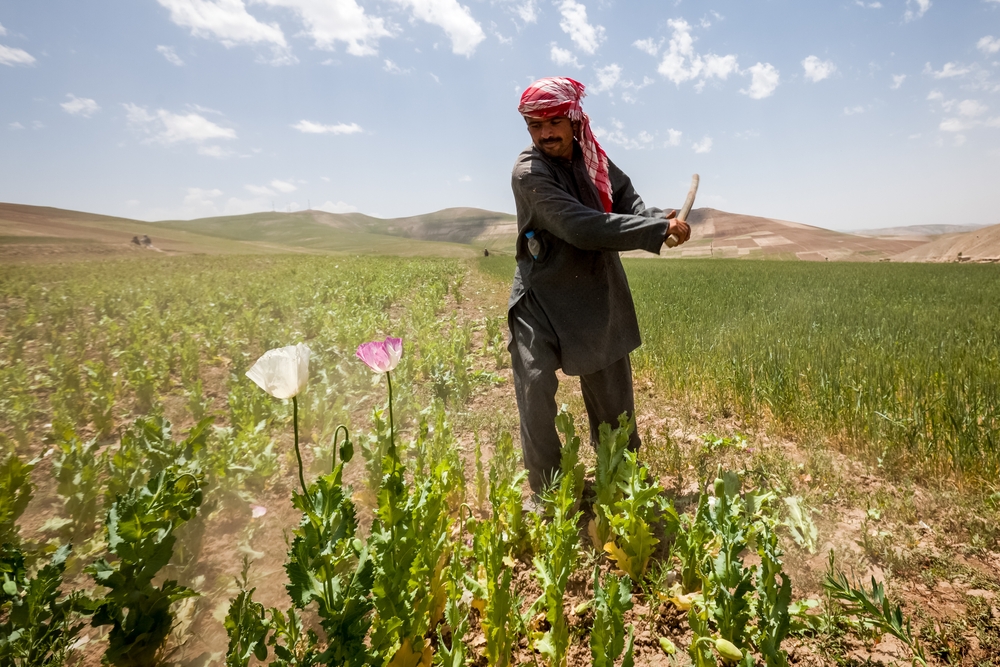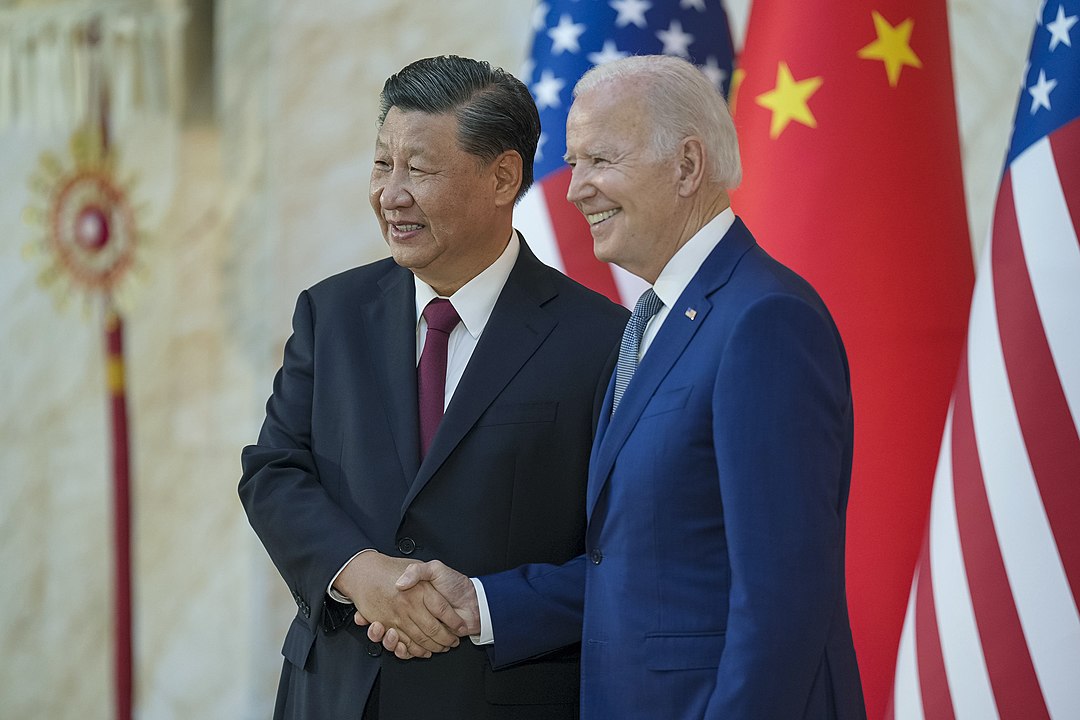The Taliban opium ban, implemented earlier this year, has drastically reduced poppy cultivation in Afghanistan. While some have speculated this might have a significant impact on Europe’s heroin supply, with alarms raised at the potential surge of fentanyl and similar drugs appearing in Europe to replace heroin’s supply, the ban and its effects need to be carefully examined.
David Mansfield, an expert on the illicit drugs industry, recently published findings in collaboration with ALCIS, a geospatial analysis company, stating that the ban was “truly unprecedented” in its scale and implementational effectiveness. However, speaking to TalkingDrugs, he clarified that “concerns that this year’s ban will cause a fentanyl epidemic are likely misplaced”. Instead, he warned of a latent shortage next year, should the ban be continued for a second year.
What is the Taliban opium ban in Afghanistan?
In April 2022, Mullah Haibatullah, the leader of the Taliban, announced as a religious edict that the “cultivation of poppy has been strictly prohibited across the country”, along with the “usage, transportation, trade, export and import of all types of narcotics”.
While previous cultivation eradication efforts were criticised as “turning a blind eye” to opium plantations, as they are a much-needed source of income for the Taliban regime. However, recent satellite imagery published by ALCIS and David Mansfield has shown how serious the ban has been in eradicating opium crops.
Opium cultivation has reduced to unprecedented levels, not seen since the Taliban’s last opium ban in 2000. This is most clearly seen in Helmand, Afghanistan’s most poppy-productive province. In 2022, half of Afghanistan’s opium was cultivated there, spread across 129,000 hectares of land; here, roughly 40% of the world’s opium supply was produced. Elimination efforts by the Taliban have reduced the land used for opium cultivation by 99.4%, down to only 740 hectares (as shown below).
 |
 |
As David explained to Talking Drugs:
“Landed farmers in Helmand and other parts of the southwest needed little persuasion to abandon poppy in the fall of 2022. Many have large landholdings and had a good crop the previous season, harvesting their poppy in April 2022 just after Haibatullah had banned [cultivation].”
One farmer commented to Mansfield that “had Haibatullah not banned it, opium would be the same price as wheat straw.”
While it seems that the ban was implemented largely successfully, it did not go down smoothly with all farmers. In Badakhshan, located in the mountainous north-eastern part of Afghanistan, Taliban clashes with local farmers meant that the ban was not implemented. And while Badakhshan’s levels of poppy cultivation are comparatively minimal to Helmand – having a cultivated land size equivalent of just 3% of Helmand’s size in 2021 – it raises serious questions for Taliban leadership on how to ensure compliance with the ban.
Based on a study done with the Afghanistan Research and Evaluation Union in 2016, Mansfield explained that “not all farmers are the same”: resistance by one poppy cultivating group does not necessarily translate to nation-wide dissent. A ban on poppies also does not destroy farmer’s livelihoods, forcing a scramble in production elsewhere. Rather, they are just one crop in a complex ecosystem of cultivation, where substitutes (like wheat, vineyards or other orchards) can be grown while the poppy ban lasts.
What does this mean for opium in Europe?
As 95% of Europe’s heroin originates from Afghanistan, this is the (multi) million-euro question to answer. The previous Taliban opium ban in 2000 could serve as historical guidance on what the opium market may look like after its most recent prohibition.
The ban at the turn of the millennium led to a 75% reduction in the global supply of heroin for that year. This was seen as economically catastrophic for many poppy-dependent farmers across Afghanistan. However, it was not sustained for long. By the summer of 2001, farmers had resumed poppy plantations, as the sudden drop in supply caused a spike in opium price.
“concerns that this year’s ban will cause a fentanyl epidemic are likely misplaced”
Opium markets can be surprisingly resilient. A mix of “rainy-day” accumulated stockpiles, compounded by the presence of complementary or substitute synthetic opioids, help stabilise the market.
While the exact amount stockpiled is difficult to estimate, evidence shows there is already a “significant inventory [of opium] in the system”. In July 2000, when the Taliban introduced its first ban on opium, it took two years for Western Europe to experience a significant drop in heroin purity. Heroin seizures in the European Union and the European Free Trade Area countries were consistent with levels before the 2000 ban, thanks to effective opium stockpiling in transit countries. Given the high levels of poppy cultivated land since 2001 (nearly quadrupling from 1994 to 2022, as shown in the graph below), it is safe to assume that the amount of opium globally circulating (and thus possibly stockpiled) compared to the first ban is much greater.

There are signs of this already taking place. After reaching a 20-year high in December 2022, the price of opium in Afghanistan has been falling, as trade remains relatively unrestricted, and supply continues without obstructions.
If historic trends apply, drug suppliers will prioritise European markets for opium and heroin, ensuring that supply is maintained at the right level to maintain high prices. In the short term, it seems like Europe’s heroin supply will remain relatively stable, and may only become compromised if the Taliban maintain and enforce a nation-wide ban for another season, emptying existing stockpiles.
An extension of the ban may mean new challenges to the Taliban.
“As a religious edict, it will be difficult for Haibatullah to rescind the ban. At the same time, the fact that some areas have not complied exposes the limits of his authority both with the population and within the Taliban movement,” Mansfield told TalkingDrugs. Continuing the ban may exacerbate threats to heroin supplies. But, as Mansfield explained, “imposing a ban for a second year will require greater amounts of coercion”, which may or may not be a power that the Taliban regime may want to exercise if it risks loosening their grip on power.
Where does this leave us?
While fentanyl is not likely to surge through Europe as a result of the Taliban’s ban, there is still a very real threat of synthetic opioids entering the market. Their increased potency, unknown product adulteration, and ease of domestic production within Europe, make for a deadly combination, as seen in Estonia in the early 2010s.
As Mansfield made clear, the ban will prove “difficult for Haibatullah to rescind”; prolonging it will put “further stresses on the Taliban movement and its relationship with the rural population”. These conflicting realities make it complicated to predict the Taliban’s next move; but it’s better to be moderate rather than fearmongering on predictions.
Ultimately, we cannot know for certain that people “are likely to turn to synthetic drugs” as has been reported, but this should not mean we should be complacent to unregulated drug market harms. Past lessons from Afghan cultivation bans may mean the European market may not feel the full force of the ban for a while, but the threat of deadlier synthetic opioids is constantly there.
I would like to thank David Mansfield for his extensive research on Afghanistan’s opium trade and the time he gave to TalkingDrugs. I would advise all to read his report to gain a fuller understanding of the topic.


